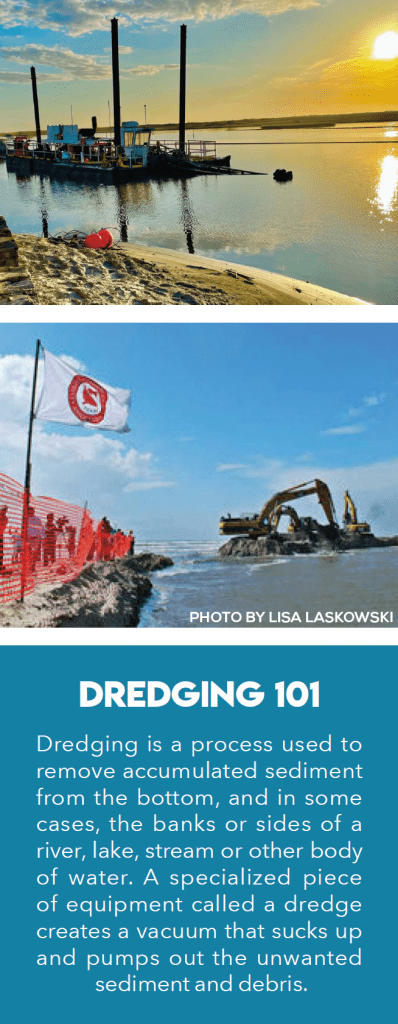
Bringing Back Fishy Business With Cedar Bayou!
 What the heck is Cedar Bayou and why is everyone so darn excited about it reopening? And who closed it anyway? Good questions! Cedar Bayou is a 3-mile tidal inlet between San Jose and Matagorda Islands that connects the Gulf of Mexico to Mesquite Bay, and through to Aransas Bay and San Antonio Bay. So basically, a waterway from the ocean to the bay.
What the heck is Cedar Bayou and why is everyone so darn excited about it reopening? And who closed it anyway? Good questions! Cedar Bayou is a 3-mile tidal inlet between San Jose and Matagorda Islands that connects the Gulf of Mexico to Mesquite Bay, and through to Aransas Bay and San Antonio Bay. So basically, a waterway from the ocean to the bay.
Historically, Cedar Bayou was an open channel between the Bay, The Gulf, and Vinson Slough, (a 22,000 acre wetland complex) and together they ensured a rich, biodiverse, and healthy, marine habitat. In a county that is economically driven by sport fishing, birding, and shrimping, that is very important. Without a connection to Vinson Slough, the velocity of water flow and volume from Cedar Bayou isn’t sufficient to maintain the natural hydraulics which keep it open. So, it’s a double problem: we need an outlet from the Bay to the Gulf and one to the adjoining wetlands.
Texas bulldozed the Bayou closed in 1979 due to an oil well blow 600 miles off the coast of Texas. This prevented oil pollution and saved the day. Except that in time residents noticed their fish population declining; Red Drum fish couldn’t get to their spawning grounds, and the quality of water sediment, algae, nutrients, and larvae was also reduced.
Cedar Bayou was also an important food source for Blue Crabs and the endangered Whooping Crane. So, in saving their Bay they had inadvertently sacrificed the health and biodiversity of their most important coastal resource. See why it’s important?
Cedar Bayou was partially dredged in 2014 but along came Hurricane Harvey in 2017 and filled it in again.
Thanks to the efforts of Aransas County Judge Bert Mills and grants from FEMA, the Texas Division of Emergency Management Agency, Texas Parks and Wildlife Fisheries Department, and Aransas County, the $9,000,000 dream of reopening Cedar Bayou is about to become a reality. Grab the popcorn!
A global engineering firm has been dredging the Bayou since May 1st and expects it to be complete by November 1st, 2021.
“Historically, when open, the Bayou provided tidal exchange between the Gulf of Mexico and Mesquite Bay. That allowed juvenile fish into the bay system,” said Aaron Horine, principal coastal engineer with Mott MacDonald, the engineering company responsible for the current reopening work. “Reopening that inlet resulted in higher fish densities of economically important species.”
The return to the historic figuration of the connected wetlands is the most effective way to guarantee the survival and strength of the coastal estuary. So, get your fishing rods ready, your boat untied, and your binoculars out because as of November Cedar Bayou is open for business. Fishy business. Who says dreams don’t come true?